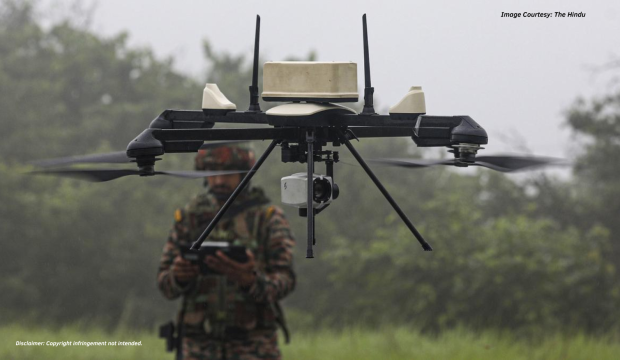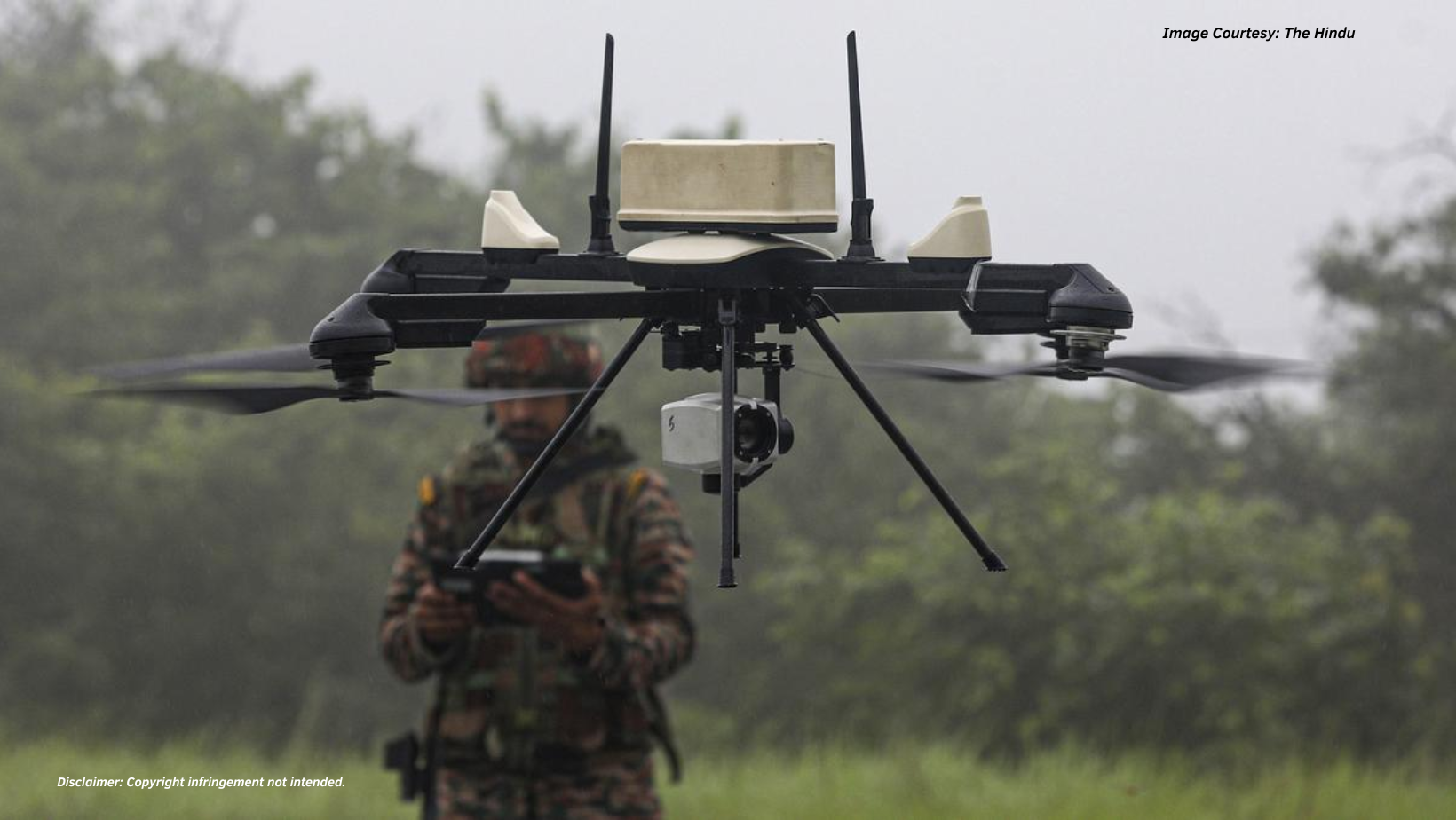There have always been concerns about war among Israelis, but it has been decades since they had to wonder whether today would be the day when they would be overrun by multiple armed attacks and exposed to acts of barbarism that would reveal mankind at its worst.
On 12 October while meeting visiting US Secretary of State Antony Blinken, Prime Minister Netanyahu said “Just as ISIS was crushed, so too will Hamas be crushed. And Hamas should be treated exactly the way ISIS was treated”.[1]
One of the hard lessons of 07 October was that the vernier of stability in Middle East had been removed, the failure of imagination one of the lessons of 9/11 was next. The unresolved Palestinian issue has now brought the region to the brink of an abyss.
A Monumental Intelligence Failure
Intelligence failure on part of the Israeli state vaunted intelligence agencies; Shin Bet, the legendary Mossad and the military intelligence is being attributed as one of the main reasons for the Hamas to have been able to unleash themselves decades after Israel was caught by surprise during the Yom Kippur War on 06 October 1973. How were the Hamas able to get the weapons, train, prepare and organize themselves and more over carry out this attack the terror spectacle of which was played out in real time.
Capability, the ability to use that capability and the will and resolve to execute this attack would not have been developed overnight and being able to discern the intent is what intelligence is all about, eliminating the threat from the base from where it originates comes next.
The Gaza border reportedly has sensors, cameras and thermal imaging to detect movement and is patrolled regularly and this is backed by quick reaction teams who can then arrive at the point within minutes. Was there some sort of cyber-attack that that preceded the attack resulting in immobilizing these assets and rendering the surveillance grid virtually ineffective. What about space-based surveillance systems? There is always redundancy built in as far as these networked systems and other monitoring mechanisms are concerned.
Using drones, bulldozers, and bombs, Hamas fighters overran border security, inflicting violence and taking hostages. Though images may suggest a spontaneous action on the part of Hamas, it was without doubt a pre- planned and well-coordinated and executed operation.[2]
The sophisticated means of spying had given Israel a false sense of confidence that the Palestinians are under their constant watch. They built a wall costing over a billion dollars. They felt that Hamas wouldn’t dare launching an attack because they would get crushed, and that the Palestinians would turn against the Hamas for causing another war. The believe was that Hamas was focused on a long-term cease-fire
Their attention was focused to the North where the Hezbollah had accumulated thousands of rockets and to the West Bank where violence was increasing to a point where analysts were talking of a third Intifada, the Palestinian Jihad seemed to be a greater threat and there was tension in the area surrounding Al Asqa Mosque.
Israel’s far right had been pushing to undo the long-standing agreement that banned non-Muslim prayer at the compound. After Israeli forces stormed the mosque in April, arresting and beating Palestinian men, Hamas quickly took advantage of the situation and called for Palestinians “to take action to defend Al Aqsa Mosque.”
But it turns out this may have been part of a deception. Operation Al Aqsa Flood was large scaled, sophisticated and well-coordinated. It was not possible without detailed operational planning. Israel’s leadership missed it.
Internal Bickerings to the Fore
The reasons that have led to this counter terrorism failure are essential. Internal bitterness, political instability and acrimony within Israel. Were the extreme right-wing credentials of the present Israeli government responsible for estranging the society.
There is no doubt, Internal political turmoil caused by the proposed overhaul of Israel’s judiciary had divisive effects on Israeli society, leading to massive public protests. Hundreds of essential military reservists pledged to refuse to show up for duty if the overhaul passed. Did this domestic turmoil weakened Israeli deterrence not only by influencing enemy perceptions but also by eroding Israel’s actual intelligence capabilities and military readiness.[3]
Yuval Harari, has said; ‘the real explanation for Israel’s dysfunction is populism rather than any alleged immorality” and went on to state that Netanyahu “has built his career on dividing the nation against itself”.[4]
It appears the political gridlock has damaging effect Israel’s security. It needs introspect in order to place national security the top priority.
Failure To Act
The events poses a fundamental question whether Israeli intelligence disaster was primarily a failure to warn or a failure to act- one leading to the other. Intelligence is a cycle, from collection, collation, to analysis and dissemination. While preventing strategic surprises is paramount
Apart from Hamas and its intent, the Israeli intelligence officials could have also misjudged Israel itself. Intelligence agencies, generally focus their attention on external threats facing their country, and on internal dissention threatening their government of their country. Unfortunately, they also need to focus not only understanding the adversaries but also perceiving how fissures in their own society can be exploited by the adversaries. Domestic politics and problems can embolden enemies and alter their assessments of actions and reactions changing their perceptions and behaviour.
It is not enough for intelligence officials to understand “them.” Intelligence must also understand “us,” and how their country’s domestic divisions are perceived by its enemies. Did Hamas feel that they could take advantage of the prevailing discontent?
Hamas’s ability to plan an attack involving thousands of fighters suggests that it was able to identify and implement countermeasures to Israel’s uncrewed aerial systems, human informants, and electronic surveillance. However, a recent statement by an anonymous Egyptian intelligence official suggests that Egyptian intelligence had detected and communicated to Israel that something big was coming.
Once the attack unfolded, there was a failure to react. To quote Brig Gen Dan Goldfus ”There was nobody really understanding the full picture”. The speed, precision and scale of Hamas’s attack had thrown the Israeli military into disarray. Some attribute it to the rebalancing of Israeli Forces to the North and West Bank.
Over Reliance on Technology
Emerging technologies are transformative in nature — they are not only changing the face of the war through AI and drone, it has profound impact on the ability of intelligence agencies.
In this technology driven era, intelligence agencies must understand and embrace new technologies faster and better to generate insight, but the new electronic tools carry risks as well as benefits. Chief among the risk is that intelligence agencies spend greater time on intelligence that is easier to obtain through electronic means and social media; thereafter, analyse through technical means rather than spending more time on intelligence that is easier to obtain, measure, and analyze by technical means and not enough weight on intelligence that is more difficult to collect and impossible to quantify by human means.
In the months before the attack, Hamas had in fact warned that a conflict could be coming. In late August, Saleh al-Arouri the group’s number-two leader, based in Beirut told a Lebanese news channel that the Israeli government’s policies, its land grabs in the West Bank and its desire to control the Al Aqsa Mosque in Jerusalem, could spark a war.
“We are preparing for an all-out war,” he said, “and we are closely discussing the prospects of this war with all relevant parties.” In April, a delegation from Hamas met in Beirut with Hassan Nasrallah, the leader Hezbollah, to discuss cooperation between the two organizations as an “axis of resistance” against Israel. The meeting was not the first. Officials from Hamas, Hezbollah, and Iran’s Quds Force have been meeting regularly in Iran and Lebanon for years. Intensions were there
Important Security Takeaways for India
The question that Israel needs to answer and which is applicable to all security forces across the globe is whether it was a intelligence failure concerning the Hamas attacks or was it a failure to act based on actionable information or was it complacency and over confidence that had led to this monumental and systematic failure. Or was there a lack of internal coordination between the IDF and intelligence agencies.
We too have multiple agencies looking after our security each reporting to its own chain of command, a case in point being border security under both Armed Forces and CAPF’s to include BSF and ITBP operating under the MoD and MHA. Is there not a case in point to get this under one unified command authority.
Prolonged deployments and not maintaining the desired degree of operational readiness led to delayed reactions and troops deployed in the vicinity of the border of Gaza Strip being overrun and some even taken hostage. There were images of tanks but their muzzle covers were on indicating that they were not prepared for firing.
The Israelis had got used to frequent rocket attacks and individuals carrying out shootings but they failed to gauge the ‘sentiments’ of the people to carry out an attack on this scale. The Services are taught to ‘think out of the box’ but potency of the Hamas attack was ‘unimaginable’. The highest levels of military readiness need to be maintained at all times.
The other issue is the ability of the security agencies and forces to focus on the territorial integrity and sovereignty of the nation and not get sucked into the vortex of internal all-consuming internal issues.
The last point which is applicable is the two extremes of warfare; technology and humans. Are there weaknesses in high technology; chinks that become visible when confronted with combat. Surveillance systems and protection systems such as the Iron Dome have had failings. Both humans and technology need to complement each other but over reliance on technology has its limitations.
We cannot wish away the fact that a multitude of people can cross a border hell bent on tearing the fabric of a nation. India witnessed this in October 1947 in Kashmir when the Lashkars crossed over in large numbers and would have reached Srinagar but they got distracted by plunder in Baramulla and by then the Indian Army had been flown in. Pakistan had also infiltrated a large number of troops dressed as locals into J&K in August 1965 as part of Operation Gibraltar. Once again it was the Indian Armed Forces that were instrumental in defeating these designs,
Conclusion
Failures are evident but the deeper question is why they happened. Militaries around the globe will be applying their minds to this aspect and though most of the answers will remain classified but there is no doubt genuine introspection is required to draw out relevant lessons.
Most countries in the West are surrounded by friends and this has led them to reduce their security structures after the collapse of the Berlin Wall and the break- up of the Soviet Union as threat perceptions were re -evaluated. A degree of comfort and reluctance to use force had set in. The Ukraine War shifted the paradigm getting ‘security and deterrence’ back in focus.
But what also needs to figured out is the manner in which Hamas got things right. How did Hamas manage to keep such a complex operation secret. Israel is in a state of shock, the aura of invincibility has been shattered. Being a hard power, it will strike back with vengeance ensuring that its response will act as a sufficient deterrent against other terrorist wishing to widen the scope of engagement.
India like Israel faces challenges from its neighbors. Our borders with both China and Pakistan are un resolved, terrorism has been and is a constant theat. It is therefore imperative that we draw out the relevant lessons thoughtfully and systematically and carryout corrective measures to ensure we are not blindsided and cannot afford a refusal to reform.
DISCLAIMER
The paper is author’s individual scholastic articulation and does not necessarily reflect the views of CENJOWS. The author certifies that the article is original in content, unpublished and it has not been submitted for publication/ web upload elsewhere and that the facts and figures quoted are duly referenced, as needed and are believed to be correct.
References
- Secretary Antony J. Blinken and Israeli Prime Minister Benjamin Netanyahu After Their Meeting, US Department of State , October 12 2023.
- Amy Zegart, Israel’s Intelligence Disaster, Foreign Affairs, October 11, 2023 https://www.foreignaffairs.com/middle-east/israels-intelligence-disaster
- Ibid
- Yuval Noah Harari, The Hamas horror is also a lesson on the price of populism, Washington Post , October 11, 2023 https://www.washingtonpost.com/opinions/2023/10/11/netanyahu-populism-weakened-israeli-security/














































